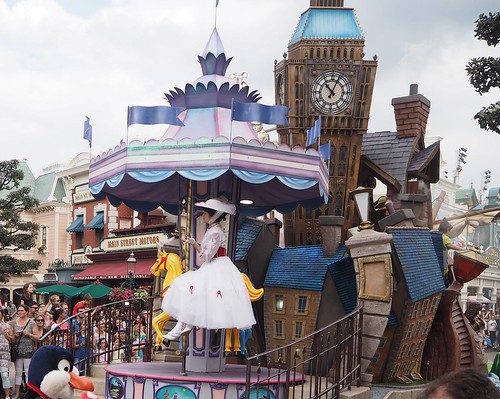Mary Poppins’ UK age rating raised to PG due to discriminatory language
Mary Poppins #MaryPoppins

Mary Poppins has had its age rating lifted to a PG by the British Board of Film Classification (BBFC) almost 60 years after it was first released.
The film’s rating has been upgraded from U – which signifies no material likely to offend or harm – to one advising parental guidance due to the use of discriminatory language, the Daily Mail reported.
It was changed because of a derogatory term for the Khoikhoi, a group of people who were among the first inhabitants of southern Africa.
Classifiers picked up on the term used by the character Admiral Boom – first as a reference to people not onscreen, then as a reference to the film’s child stars when their faces are blackened with soot.
“We understand from our racism and discrimination research … that a key concern for … parents is the potential to expose children to discriminatory language or behaviour which they may find distressing or repeat without realising the potential offence,” a BBFC spokesperson told the Mail.
“Content with immediate and clear condemnation is more likely to receive a lower rating.”
The reclassification affects only the cinema version of the film, with home entertainment versions still rated U, according to the BBFC. The word in question is “Hottentot”, an adopted name for the Khoikhoi used by Dutch settlers, thought to imitate their language, which is considered offensive. It would later be used to refer to all black people.
It is not the first classic film to have its rating upgraded in recent years. According to the BBFC’s 2022 annual report, the 1978 animated film Watership Down merited a PG rating as classifiers sought to “remain in step with societal standards”.
They said: “In their exile, the rabbits meet various challenges, some of which result in bloody bite and claw injuries caused by animals fighting. In one scene, a bird tells one of the rabbits to ‘[pee] off’.”
They added: “When we viewed the film under the current guidelines we reclassified it PG in line with our current policies for violence, threat, injury detail and language.”
The 1979 film Star Trek: The Motion Picture was also upgraded from a U to a PG that year as a result of its “very mild language, mild violence and threat”, the BBFC said.
When deciding on how to classify a film, the BBFC considers scenes that might show dangerous behaviour, discrimination, and references to drugs and sex. It also considers the language used in the film, scenes of nudity and of threat, horror and violence.
Classifiers particularly look out for discriminatory language or behaviour that is “unlikely to be acceptable unless clearly disapproved of, or in an educational or historical context, or in a particularly dated work with no likely appeal to children”.